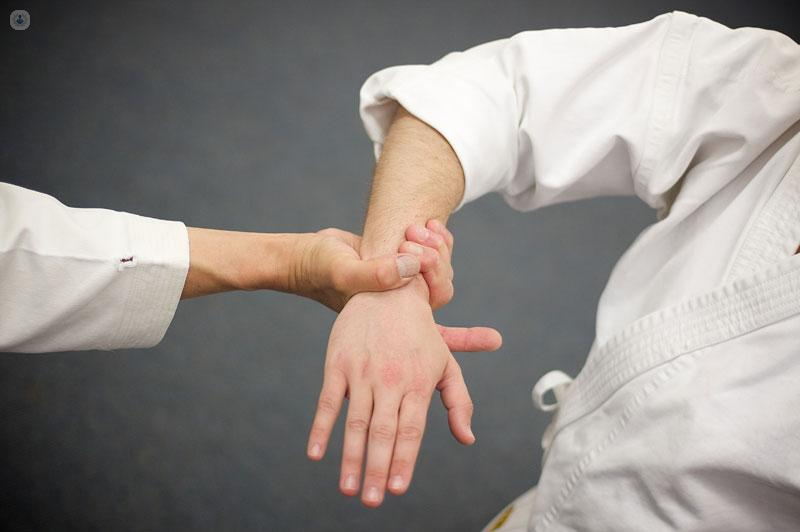Common wrist injuries - how do they happen, and how are they treated?
Written in association with:Wrist injuries affect mobility and all activities involving effort with our hands, implying a functional limitation on day-to-day tasks. The most frequent reasons for consultations for wrist pain can be grouped based on their most common causes.
Causes of wrist injuries: repetitive strain
Repeated and sustained manual over-exertion can cause tendinitis or the appearance of synovial cysts or ganglions on the back of the wrist. The most frequent form of tendinitis is that which affects the fingers and especially the thumb in which pain radiates from the wrist to the forearm and thumb. These wrist injuries usually appear during the working life of the patient and by the practice of certain sports.
Causes of wrist injuries: trauma to the wrist
Injuries that can appear after a trauma of certain intensity on the wrist are the fracture of the radius in its section closer to the wrist and some injuries of the ligaments.
They also occur in young patients in relation to high energy trauma, such as sports or traffic accidents
Osteoporosis & inflammatory disease in wrist injuries
Wrist fractures are very common in patients with osteoporosis who stop an open-handed fall, and menopausal women are a specific risk group. The cause of some wrist injuries can also be traced to rheumatic inflammatory disease.
How do I know if I have injured my wrist?
Injuries to the wrist ligaments often go unnoticed at first because they do not present specific pain that is easy to identify. This is why it is advisable to consult a specialist in hand and wrist surgery, as specific manoeuvres or tests are often required for diagnosis. A triangular fibrocartilage lesion or a rupture of the scapholunate ligament are two of the most frequent ligamentous lesions, which usually require surgical treatment.
Treatment for wrist injuries
Tendinitis usually improves with anti-inflammatory treatment and immobilisation with orthopaedic splints. When they are resistant, a local infiltration can be carried out. In cases where the cause is a narrowness at some point in the tendon circulation, surgical treatment may be necessary.
Surgical treatment for wrist injuries
Synovial ganglions require surgical treatment when they generate some type of pain or functional limitation. Currently, there are advantages with treating them by means of arthroscopic technique, thus avoiding cutaneous incisions and the risk of limitations in mobility. Fractures with displacement of bone fragments need to be treated surgically, reconstructing the original shape of the bone with the use of a custom plate and screws. A wrist arthroscopy is a useful technique for controlling the condition of the joint during surgery. The ligamentous lesions mentioned above usually require surgical treatment, and in this case, arthroscopic surgery is also of great help for evaluation and treatment.



